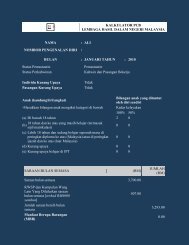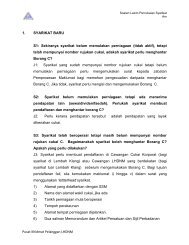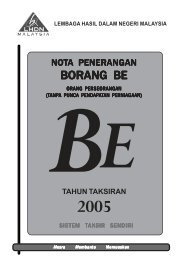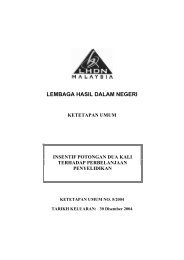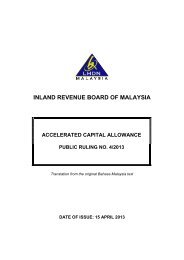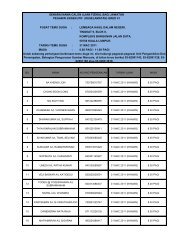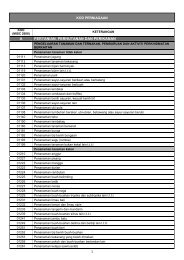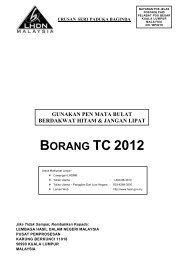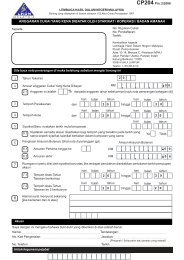Tan Sri Mohd Sidek Hassan
Tan Sri Mohd Sidek Hassan
Tan Sri Mohd Sidek Hassan
- No tags were found...
You also want an ePaper? Increase the reach of your titles
YUMPU automatically turns print PDFs into web optimized ePapers that Google loves.
At Your Servicehave suffered adverse socio-economic implications as the global demand of riceoutstripped supply, causing its price to escalate to double its normal level. Malaysia’scurrent self sufficiency level for rice is 70%. This means we import the remaining30%, amounting to approximately 800,000 tonnes annually. This dependency onthe global market for rice gave us no option but to purchase rice at high pricesin the midst of the crisis in order to secure sufficient supply. Therefore, in orderto ensure food security and efficient resource utilisation, we must strike the rightbalance between domestic production and imports by taking into considerationissues on competitiveness as well as supply availability, employment and incomelevels. Malaysia is fairly dependant on imports. In 2008, we imported RM27.9bilworth of food items, compared with our food exports of RM17.8bil. Our averagetrade deficit in food items is approximately RM9bil to RM10bil per year and steadilyincreasing. Therefore, our strategy to reduce dependency on imports is to producelocally at competitive prices.To address food security, the Agriculture and Agro-based Industries Ministryimplemented the Food Security Policy in the middle of 2008 and put in place specificshort- and medium-term measures to ensure the availability of food, especiallystaple food. Without these support programmes, domestic food prices in 2008would have escalated much higher in tandem with international prices.As rice is the staple food for Malaysians, amajor emphasis of the policy addresses theissue of rice availability, both in physical andeconomic terms. This requires that rice ismade available throughout the country ataffordable prices.The immediate concern of the Government is to increase paddy productivity. Thisis achieved by improving and upgrading infrastructure, increasing the use of farmmachinery, modernising farm management and promoting the use of quality inputs,including fertilisers and seeds. The ministry also intends to establish new paddygranary areas in Pahang, Sabah and Sarawak. In addition, the Government takesa bold step by increasing the quantity of the national rice stockpile. Purchases of118



